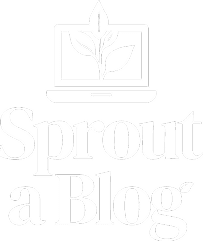Discover Essential Blogging Tools for Beginners: Free Options Included!
Starting a blog can feel like setting out on a long road trip without a map, unsure which turn to take or what lies ahead. But don’t worry— we are here to showcase some of the must-have blogging tools and resources that can guide you step-by-step, making the journey smoother and more enjoyable.
One of the best ways to set yourself up for blogging success is by using the right tools. From generating fresh ideas to optimizing your content for SEO, these resources serve as your compass, map, and toolkit on your blogging adventure.
Whether staring at a blank screen or juggling social media strategy, we’re here to show you the essential blogging tools you need. Furthermore, we’ll highlight free options to help cut costs while giving you what you need to get started. Ready? Let’s turn your dream blog into reality!
Tools for Content Creation
Content is the backbone of any blog. Whether you’re crafting a must-read guide, a thought-provoking opinion piece, or a lighthearted list, the following tools can make the process more manageable.
1. Google Docs
Why You’ll Love It: It’s free and perfect for brainstorming, drafting, and collaborating. You can even share drafts with friends, editors, or co-writers for real-time feedback.
Pro Tip: Use the voice-typing feature to jot down ideas when inspiration strikes, but your hands are busy (or too lazy to type).
2. Grammarly
Why You’ll Love It: Say goodbye to pesky typos and grammar mistakes. This tool offers both a free version (for basics) and a premium version (for style and tone suggestions).
Best Practice: Run every blog post through Grammarly before publishing to keep things polished and professional.
3. Hemingway Editor
Why You’ll Love It: If clarity is key, Hemingway Editor is your best friend. It highlights complex sentences, suggests simpler alternatives, and ensures your content scores high in readability.
Added Bonus: It’s free and doesn’t require installation, making it perfect for bloggers working on tight budgets.
4. AnswerThePublic
Why You’ll Love It: Stuck for content ideas? Type in a keyword, and this tool generates a goldmine of questions your audience is asking online.
Pro Tip: Use it to create FAQs, listicles, or articles that solve your audience’s problems.
These tools will keep you organized and help your ideas take shape, allowing your creativity to flow effortlessly.
SEO Optimization Tools
Great content only matters if people can find it. SEO (Search Engine Optimization) is a must for driving traffic and building an audience. The following tools are essential for improving discoverability.
1. Google Search Console
Why You’ll Love It: A free tool for monitoring your blog’s performance in Google search results. Identify which keywords you’re ranking for and find areas to improve.
Quick Tip: Use the “Performance” report to identify high-traffic pages and refine them for better engagement.
2. Yoast SEO
Why You’ll Love It: Our fav! A WordPress plugin that makes optimizing posts a breeze. It analyzes your content and gives easy-to-follow suggestions for better rankings.
Free vs. Paid: The free version is stellar for basic optimization, while the pro version unlocks advanced features (like internal link suggestions).
3. Google Analytics
Why You’ll Love It: It goes beyond SEO to help you understand your audience. Track where visitors come from, what they read most, and how they interact with your site.
Best Practice: Use it alongside Google Search Console for a complete picture of your blog’s performance.
4. Ubersuggest
Why You’ll Love It: Created by marketing guru Neil Patel, this budget-friendly tool offers keyword insights, competitor analysis, and backlink tracking.
Pro Tip: Get started with the free version to identify long-tail keywords for blog topics.
With these SEO tools, you’ll attract readers and keep them returning for more.
Graphic Design Tools
A blog without visuals is like coffee without cream—not quite complete. Visual content helps grab attention and enhances engagement. Here’s where to get started:
1. Canva
Why You’ll Love It: This user-friendly platform is perfect for designing everything from blog banners to social media posts. Plus, it’s free for basic features.
Pro Tip: Use Canva templates to maintain a consistent brand aesthetic across your blog and social media.
2. Unsplash & Pixabay
Why You’ll Love Them: Need high-quality, royalty-free stock photos? Both sites are free and offer an extensive library of images and videos.
Pro Tip: Pair photos with your branding using Canva for an extra touch of polish.
3. Adobe Express
Why You’ll Love It: A beginner-friendly tool for creating stunning graphics, videos, and animations. Great for elevating your visuals with minimal effort.
Budget Friendliness: A free plan is available, but the paid version offers more design customization.
Good design doesn’t have to be expensive or overwhelming. These tools make it easy to create visuals that complement your content.
Social Media Promotion Tools
Once your blog post is live, it’s time to share it with the world. Social media promotion tools help you streamline the process and reach your audience effectively.
1. Buffer
Why You’ll Love It: Schedule posts across multiple platforms and use basic analytics to track performance.
Best Practice: Use Buffer’s scheduling feature to post when your audience is most active.
2. Hootsuite
Why You’ll Love It: Similar to Buffer but with more robust features. Monitor social mentions, track engagement, and plan campaigns from one dashboard.
Free vs. Paid: The free version is good for casual users, while premium plans cater to serious social media strategists.
3. Later
Why You’ll Love It: Later specializes in Instagram scheduling and lets you visually plan your feed and optimize post times.
Pro Tip: Include links in your bio and posts to drive traffic from Instagram to your blog.
Social media is a powerful distribution channel; these tools make it easier to get your blog content in front of the right eyes.
Analytics Tools
You have to start somewhere, and why not start at the beginning? What does your blog’s performance look like today, and where do you want it to go? Analytics tools help you measure success and refine your strategy.
1. Google Analytics
What to Measure:
-
- Traffic sources (where your readers come from).
- Bounce rate (how quickly visitors leave your site).
- Time on page (how long readers stay on your posts).
Pro Tip: Set goals in Google Analytics to track specific actions, like email sign-ups or comments.
2. Hotjar
Why You’ll Love It: It is a unique platform that offers heatmaps and session recordings to show how users interact with your blog, which is a great way to improve user experience.
Added Bonus: The free plan is enough for most beginners.
Track, measure, and adjust. Analytics tools help you refine your content and strategy. Keep moving forward!
Your Toolkit for Blogging Success
Blogging is a craft; like any craft, it becomes much easier with the fundamental tools. From brainstorming your next big topic to sharing it with the world, our resources are designed to simplify and supercharge your blogging efforts.
Remember, you don’t need to invest in all these tools immediately. Start small, experiment with free options, and upgrade as your blog grows. The key is to keep learning and adapting.
Your voice matters. The world deserves to hear what you have to say. Now, pick a tool, write your first post, and take the first step in your blogging journey!




